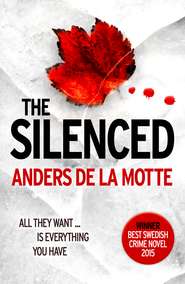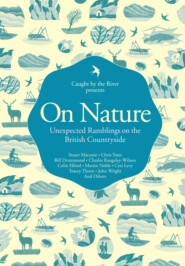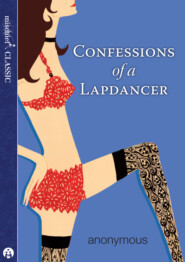По всем вопросам обращайтесь на: info@litportal.ru
(©) 2003-2025.
✖
We Are Not Such Things: A Murder in a South African Township and the Search for Truth and Reconciliation
Настройки чтения
Размер шрифта
Высота строк
Поля
“It’s about the trees. They came down from the damn trees.”
“It’s not racist to be scared of black people. It’s realistic.”
The people who said such things were not dropouts from the boonies. Rather, they were well educated and widely traveled: a lawyer, a businessman, a designer, a farmer, a small business owner. And they were decent people, too. The racists of South Africa are a kindly lot, who are helpful and resourceful, community-minded and polite. They’re a good laugh, fine company, and fantastic to have by your side if you’re in a pickle. These very bigots, many of whom I hardly knew, have driven me across the country, saved my dog’s life, provided me top-notch medical care, given me free room and board when I needed it most, generously hosted me in their homes, and cooked me meals. And they don’t just help other white people. I have seen them feed the poor colored beggars, even as they roll their eyes; offer free and compassionate legal advice to the very black people for whom they have previously expressed disdain; put their gardener’s children through school; and buy beautiful houses for their maids, complete with furniture.
Usually, when the racists know black people personally, they are capable of seeing them as individuals. But on a larger level, to them black South Africans seem to meld together with their inept, corrupt black leaders, into an indiscernible mass, a majority that is steering the country toward mayhem: economic free fall, widespread violent crime, a crumbling public healthcare system, a broken government peopled with cronies. It is this mass—not specific members of it—that is the enemy. Before the mass existed (or more accurately, when it was disempowered and hidden), white South Africans lived in a kind of utopia: agreeable dirt-cheap labor, all the fruits of a gifted land, beauty everywhere for the taking, lovely neighborhoods with open doors, and all the suffering contained behind borders at a good distance.
Once I asked Easy about a friend of his whose actions were inconsistent. What he said makes as much sense as anything: “He’s a human being. Sometimes he’s good, sometimes he’s evil. Sometimes he is comme ci. Sometimes he is comme ça.”
I met plenty of exceptional white South Africans, of course. I came to know a yoga teacher whose many boyfriends spanned the racial spectrum, and a corporate mom born into a conservative Afrikaner family who married a Congolese basketball player. I spent time with some of the old white freedom fighters, who remained as committed to racial equality and justice as ever. I hung around a bunch of my husband’s high school friends, well-off thirty-something men who were focused on their various apolitical endeavors, like creating a Burning Man–type festival in Africa or bringing Cape Town its first New York–style Jewish deli or attending ayahuasca ceremonies for spiritual healing. And I knew plenty of young white activists who worked with the country’s most disadvantaged, including a man fluent in the Zimbabwean tongue of Shona who had devoted his life to helping African refugees gain footing in a new land.
However, according to the wealthy white citizens I met at first, townships—the impoverished zones created by the apartheid government to segregate black South Africans—were the epicenters of the crime epidemic sweeping the country, the places out of which black badness oozed. During apartheid, people of color had little access to white areas, generally allowed in during the day to work but banned after close of business. Once the laws that controlled people’s movement had been dismantled, that violence spilled out, affecting whites as well as everyone else (though whites complained most vigorously, crime actually affected them far less than it did their dark-skinned compatriots). South Africa, with its soaring crime rate, was now among the world’s most violent countries, with a murder rate five times that of the global average. Every day across the country there were 502 assaults, 475 robberies, 172 sexual offenses, 47 murders, and 31 carjackings. Every day, 714 houses were burgled, 202 businesses were robbed, and 349 cars were broken into.
Instead of seeing these daily terrors as the result of tyranny, many South African whites came to associate them with the enduring swaart gevaar, or black danger. The threat of the swaart gevaar—the concept of an overwhelming and inherently bloodthirsty black majority that needed to be contained lest it consume everything in its path—had been used to persuade a white electorate to vote into power in 1948 the National Party, whose platform came to be known as apartheid.
I could see these townships, Gugulethu in particular, from the highway leading away from the airport: a glimmering sea of corrugated tin shacks separated from the road by only a strip of grass, upon which I once saw a man squatting for a shit while casually flipping through a magazine. This accounted for the faint fecal stink that wafted out from the slums, especially on hot days. I was eager to see inside, but I was informed, repeatedly, of the dangers of those ghettos, which teemed with ruthless gangs high on a type of rough local crystal meth called tik.
In an old Lonely Planet guidebook I found, nestled between reviews for the extravagant high tea at the pink Mount Nelson Hotel and a most pleasant ride up the aerial cableway to Table Mountain, I read a quick note on the townships, which were situated in the Cape Flats, a depressed belt of sand and bedrock southeast of the city known as “apartheid’s dumping ground”:
For the majority of Cape Town’s inhabitants, home is one of the grim townships of the Cape Flats: Gugulethu, Nyanga, Philippi, Mitchell’s Plain, Crossroads, or Khayelitsha. Visiting without a companion who has local knowledge would be foolish. If a black friend is happy to escort you, you should have no problems.
Lacking an amenable black escort at the time, I waited until one day, less than a month into my stay, an opportunity to pass over those allegedly dangerous borders presented itself. Sam was setting up a project aimed at improving the delivery of basic social services for the poor, and he had been invited by an NGO to see the conditions in Khayelitsha, a sprawling township of nearly 400,000 people just north of Gugulethu. He asked me if I’d like to come along.
On that hot day in November, we met two women at the organization’s headquarters off a main road, a chilly refurbished municipal building surrounded by barbed wire and guarded by a groundskeeper and his two sooty dogs. The lead guide was a fat and pretty black lady, with a flawless complexion and a short ponytail. Her assistant, also black, was a grave, slender woman with cropped hair and glasses; the left side of her body, running from her chin to her hand, had been consumed by fire long ago, and the skin was knotted with scar tissue.
Townships are divided, roughly, into formal and informal areas. The formal areas are generally those built up with simple cement houses along paved streets. Most were constructed years ago by the apartheid government, and have been, over time, expanded by their inhabitants, repainted various colors, remodeled and tricked out or neglected and allowed to fester. Some were constructed more recently by the new black-led government under the Reconstruction and Development Programme, which aimed to help close the massive gap between the rich and poor, and white and brown. These are known as “RDP houses,” and tend to be small, relatively new, identical matchbox homes clustered together. The key to such a house is obtained by languishing on a waiting list. Woven between, behind, and among the legal homes is a web of backyard shacks, built by homeowners and rented out in an underground township economy.
The formal areas also contain hostels taken over by squatters. During apartheid, companies housed black migrant laborers in single-sex dormitory-like structures, carting them to and from manual jobs each day and allowing them one month a year to visit their families in the rural areas designated for most blacks. In the late 1980s and early 1990s, as apartheid edged toward its demise and the townships became increasingly ungovernable, the companies abandoned these buildings and the workers and their families took over. Twenty years later, they still live in cramped, deteriorating quarters under faded signs bearing the names of the original owners: WJM CONSTRUCTION CORP, UME STEEL LTD, DAIRY-BELLE PTY. Pigeons roost in the broken shower stalls. Once in a while, a police tow truck pulls out from a hostel’s courtyard, dragging a stolen car behind it.
Informal settlements are plots of previously barren urban land upon which people squat, usually in haphazard tin shacks. They are meant to be temporary, but often become permanent as their inhabitants, mired in poverty, fail to either score an RDP house or rent a better spot. The settlements rise up on township borders and on undesirable land within. They contain a mixture of city-born locals, migrants from the underdeveloped South African countryside, and refugees, asylum seekers, and undocumented aliens from repressive Zimbabwe, impoverished Ethiopia, war-torn Somalia, war-torn Democratic Republic of the Congo, and war-torn Burundi. Since the settlements are not government-approved, they receive little in terms of services and once in a while are unceremoniously torn down.
Our guides lived in one such settlement, a maze of makeshift matchbox houses set on gray sand. The plumper woman lived in a tidy single room with her husband, a few children, and the inevitable rat or two. She called her young son, a shirtless ten-year-old with a mischievous smile, and instructed him to watch our car, which we parked in a dirt yard. We would conduct the tour on foot, since the pathways far into the shantytowns—tiny, potholed roads that passed through insecure territories—weren’t built for vehicles. We were deep inside Khayelitsha now, invisible to the outside world.
“See how we are living,” a woman called from behind a low wire fence as we trudged through the sand. In her shack, a flat-screen TV played a daytime soap, and a bunch of people sat on stools, drinking brandy, waving at us. “Come in, come see how we live.”
Trash piled up in a stagnant, water-filled ditch beside the houses. Children with crusty faces played by a pile of refuse, where a herd of goats feasted. The garbage was laced with rat poison. During the rainy season, when water seeped into the shacks and sewage spilled into the streets, kids came down with diarrhea. A pack of dogs slunk by, all grown in the township canine mold: of medium size, sporting short pale-brown fur, with pointy ears pressed low against the head. A few weeks earlier, a different rogue pack of mutts had broken into a shack and mauled a child to death, so the people were in the mood to stone them. A barefoot white man with dreadlocks and a long beard lay in the lap of a black woman, her hair tied back with a violet scarf. They wore stained pajamas and faced the sun.
We passed a low swampland on the border of the highway, shacks built among the reeds; in the rain, pungent murky water rose up through the floors of each house, whose lightbulbs were powered by a spaghetti of ragged lines jury-rigged from the power poles. The shack dwellers were unmoved by posters urging South Africans to KEEP OUR COUNTRY POWER-FUL, part of a nationwide campaign to curb electricity theft.
Toilets were often buckets or the fetid fields by the highway, where people squatted in the open as cars whizzed by, the worlds so separate that neither the drivers nor the defecators seemed concerned by each other’s humanity. Some portable toilets had been provided by companies that had won city contracts, but they were rarely cleaned or emptied, and the resulting indignities had led, in part, to the Poo Wars. Worse, such toilets could easily be toppled, as the installers sometimes skimped on cash by failing to secure them to the ground. Local criminals pushed the unstable toilets over while people were inside, reached in, grabbed cellphones or cash, and left their victims scrambling amid a soup of age-old human waste and neon-blue chemical sludge. Kids on their way to pee in the pitch-black night were hit by cars or snatched off a path and molested. Adults who needed to expel before a morning shift at work were mugged for their cellphones as they hiked in the dim predawn light. The whole area shared a dozen or so communal taps. I tried to figure out how a person could bathe, the dwellings pressed so close together.
“What about privacy?” I asked the assistant.
“Privacy?” She let out a bitter laugh. “There is no privacy.”
The women led us past a row of yellow three-room houses built by an Irish charity. I admired the houses, popping out cheerfully from the mass of gray corrugated tin and old timber, the address numbers painted in pastels by the front doors, accented by a little cartoon flower. The assistant pointed to a ramshackle two-story gray manor at the path’s corner, its roof supported by uneven columns. At the base of the manor was an austere grocery shop manned by an aging grocer in a white hat.
Teenage boys laughed and shared cigarettes by a little spaza shop, a bodega that sells soda, candy, chips, phone cards. A man shaved his friend’s head on a stoop, dipping his razor and soap in and out of a bucket. Children brightened as we passed, reached for our hands. Finally, we came upon the tour’s ultimate destination: a square of sand, smoke rising from its edges. People were bringing buckets of water and pieces of wood and iron back and forth.
“It burned last night,” the guide explained, ushering us into the smoldering lot. Of the three shacks that previously stood here, only outlines on the ground remained, debris all around. Nobody knew how the fire had started—a cigarette in bed? An electrical outage? A gas stove? Or maybe somebody had a grudge; it was not unheard of to lock an enemy in his shack and set it alight, leaving him to pound at the door as he burned. Once a spark caught, all nearby shacks could be consumed by flames; in these tight quarters, built of thin flammable materials, fire spread fast, and sometimes it took out hundreds of shacks before a fire truck could arrive and control the blaze. Whole neighborhoods were flattened and rebuilt on the regular. Our guide had twice lost her home to fire and once lost her shack when the city council resettled her whole block to make room for a new power plant. She had come home to find a slash of red spray paint across her door, marking her place as one to be removed.
“They just painted my door,” she said, shaking her head. I imagined the municipal worker, living in some nicer part of town, brandishing his red can of paint as he strode down these sandy paths, past shelter after shelter patched together, he assumed, with garbage. What’s the difference if you slash a red mark across a mound of trash?
At the empty lot, a group of women stood at an incline. One was tall and busty, in her fifties, wearing a long skirt and a T-shirt that displayed her pendulous breasts. Her arm was wrapped around a smaller, darker woman with thin shoulders and short hair. The guide explained to us: it was this smaller woman whose house had burned and whose father had died in the smoke and fire. She was silent, standing among the remains of her home, staring at us with red-rimmed eyes.
We had been joined on the tour by a gangly ginger-haired American research fellow who, within three minutes of meeting a person, compulsively conveyed that his wife was a black South African.
“Can I give money?” he asked awkwardly, his face reddening. The guide grew equally uncomfortable and shrugged.
We passed the assistant’s shack on the way out. She called her six-year-old daughter to come meet us. The girl had a heart-shaped face, a missing front tooth, and short hair in little twists.
“Hello,” I said. “What is your name?”
“Yes, teacher, thank you, teacher,” she said, batting her eyelashes.
Later, as Sam and I drove away, the streets grew wide and smooth as the township receded. Heavy-bottomed palm trees lined the road. The people were soon lighter and taller, as if to match the ivory buildings that rose along the crashing sea. The restaurants were full of diners ordering calamari and chicken caesar salads. In the distance, along the promenade, the iconic red-and-white-striped Mouille Point lighthouse sparkled, and silky dogs ran after tennis balls in its shadow.
At the time, we were living in a dull, cold rental apartment, which was angled so that not even the smallest beam of sun could enter, ever. On one side, shaded windows overlooked a golf course, and on the other side, small, high windows overlooked an open hallway that circled an interior courtyard. These windows above the courtyard presented an acoustic nightmare that sent the din of a radio in another apartment or the low pitch of a conversation in the common area directly into our living room at top volume. I hated the place, with its walls coated in mold in the winter and its unflattering fluorescent lights. In the basement, the storage areas used by residents had once been rooms where black and colored maids would sleep. A few communal bathrooms, which included toilets and showers, had been built in the hallways during apartheid so that the help did not use their boss’s private facilities.
But on that day, the flat took on new characteristics. It was luxury, pure and simple, with its sturdy walls, its two secure locks, windows to protect against the elements, plentiful electricity, and a bathroom and toilet of its own. I stood in a scalding hot shower and felt filthy rich. I never wanted to go back to the townships and I wanted to go back immediately.
But you couldn’t just wander aimlessly around there. It was too far from town for a pop-in, and there weren’t, for example, coffee shops with Wi-Fi where a person could hang out. So I started to research various NGOs that did work there. I asked around, again surveying the people I knew, but I was only met with gestures of concern. It seemed that I was a not uncommon species of foreigner who thinks a bleeding heart or a hankering for a taste of “real Africa” will keep her safe as she wanders, smiling dimly and handing out lollipops, through destitute black areas. So in my search for volunteer work, I was met, several times, with the same question, uttered with a mixture of irritation and concern:
“Haven’t you heard of Amy Biehl?” people said. “Better not come down with Amy Biehl Syndrome.”
I was twelve when Amy Biehl was killed, and not up on international news, so I had never heard of her. Now, with no friends in South Africa and only a bit of freelance work trickling in, I had plenty of time to burrow into that Internet rabbit hole. I began to look into the story of the young white scholar attacked by the black mob. The tale had been covered at length, with over 100,000 search results on Google. For days, I read articles and studied images. The murder had been so odd, the fury so misplaced, and the choice of victim so ironic. The story, as it rolled out before me in backlit print, conveniently followed along the country’s timeline for the past nearly two decades: oppression, inequality, activism, protest, race-based violence, imprisonment, freedom, amnesty, reconciliation. Over the years, the headlines themselves traced the arc of recent history:
A BRUTALIZED GENERATION TURNS ITS RAGE ON WHITES
(The New York Times, 1993)
THREE BLACKS FOUND GUILTY OF “RACIST” KILLING
(The Herald, Glasgow, 1994)
SOUTH AFRICANS APOLOGIZE TO FAMILY OF AMERICAN VICTIM
(The New York Times, 1997)
4 SOUTH AFRICAN KILLERS OF U.S. STUDENT GET AMNESTY
(Chicago Tribune, 1998)
BIEHL PARENT, APARTHEID FIGHTER BRIDGE GAP
(The Santa Fe New Mexican, 2004)
IN SOUTH AFRICA, AN IMPROBABLE TALE OF FORGIVENESS











